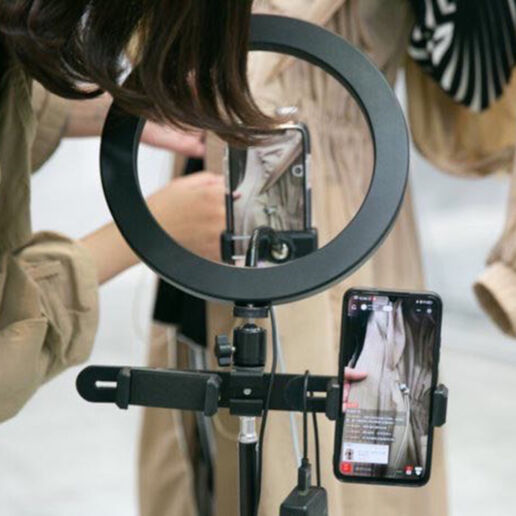AFTER THIS…
A brief history of fashion during the pandemic.
The pandemic suddenly came into our lives and, let’s be honest, we were caught off-guard. Nowadays, most sentences that contain a warning or give hope start with these words: After this… It turns out that we were yearning for something to change and begin anew. A day doesn’t go by without hearing new recommendations on adjusting to the “new normal” in every aspect of life. Fashion is an industry in which new solutions, new beginnings and expectations are gradually emerging.
Lately, there have been numerous problems on the agenda which have all evolved to the extent of demanding a crisis desk of their own and things have become more serious with the pandemic. All the subdomains of fashion have been hit by the crisis. It’s hard to talk about a single issue. From designers to retailers, manufacturers to consumers every player in the industry is facing a serious problem which demands people to question themselves. Then there are the explosive Black Lives Matter protests which have shaken the foundations of the system, causing disbalance and creating new problems.
WHAT HAPPENED?
Can someone explain what happens next? Before coming to that, let’s summarise what actually happened over the last months. The luxury market suffered its worst year in history. The concept of physical shopping became out of the question. Unsurprisingly, many stores had to shut down indefinitely. This disrupted and, in some cases, derailed the dynamic circulation of the industry. Like everyone else, the fashion sector was unprepared for the pandemic. However, the industry was quick to activate its solution reflex which happens to be one of the most important elements of the capitalist system. Every way had to be tried to overcome the situation with the least damage. Brands that invested in e-retail in addition to physical shopping profited most from the crisis. The outlook was bleak for those who insisted on conventional sales channels. The challenge faced by e-retailers was the cautious consumers who slowed down spending on clothes in a world where the workforce shrank on a global scale. The pandemic reminded consumers of the importance of saving and people took personal measures to tackle the problem. The e-retailer market sensed this and moved quickly to implement their discount plan. The aim was to increase purchasing by cutting price-tags by up to 70% and offload seasonal products as much as possible. The trick was a partial success but it did not stave off a certain amount of losses. One of the biggest problems demanding urgent attention was paying the wages of textile workers. These people were already the victims of a grand plot and were underpaid even before the crisis. But the situation became worse when big brands cancelled their orders or failed to collect their goods. As one of the largest textile producers, Bangladesh suffered a loss of 6 billion dollars. The government was only able to allocate a rescue package of 588 million dollars which was insignificant in comparison to the damage.
The visible part of the fashion industry started to brood over the matter.
DIGITAL FASHION WEEK?
There was no chance of success for a physical show without spectators. Considering that our homes have transformed into offices or concert halls during the pandemic, the same could work for the catwalk. This is when the idea of a digital fashion week was conceived. The organisers of the Fashion Weeks in London, Milano and Paris announced that the approaching men’s and Couture weeks, as well as the resort collections, would be done in digital format. This new approach caused a lot of excitement but there were doubts about its impact. When the time came for the events, everyone was glued to their screens, waiting for their first digital fashion experience. This was a great opportunity for brands and fashion houses to prove their skills in adapting to the new normal. Everyone tried a different method. Prada prepared a series of five videos. Gucci appeared with a 12-hour long live epilogue. Dior made its debut with a mythological film for its couture series called “Le Mythe Dior”. Pierpaolo Piccioli joined forces with Nick Knight and FKA Twigs for Valentino’s dark but equally mesmerising film called “Of Grace and Light”. Many other designers and brands diversified their seasonal shows with campaign-style photoshoots and narrated videos. Brands like Dolce & Gabbana, Etro and Jacquemus organised events with invitees but this was not taken so kindly. On the other hand, Loewe transcended physicality to another dimension with its “show in the box” concept. The press box contained numerous items including a fabric catalogue to give a “close-to-reality” experience as well as a paper turntable and LP which contained a narration of the collection.
So, is there any chance of going back from all of this?
While there are plans to organise a physical fashion week in Paris at the end of September, what was the feedback on the digital version? We must remember that brands are going through a series of crises. Online sales might be a lifesaver but the absence of physical sales has caused tremendous loss for brands. Some brands managed to make a profit but the figures for the second quarter have remained at a historic low. Statistics suggest that digital fashion weeks are heading towards a fiasco. Direct interaction might be via online platforms but compared to the interaction achieved through physical fashion weeks, the figures on returns are up to 50% lower. Undoubtedly this brings a lot of controversy about how successful digital fashion weeks can really be. The first trials are far from successful but they have shown brands that there is an alternative way. However, uncertainties about how long this period will last are yet to present many more challenges for players in the industry. So, what happens next is still a great big unknown…


